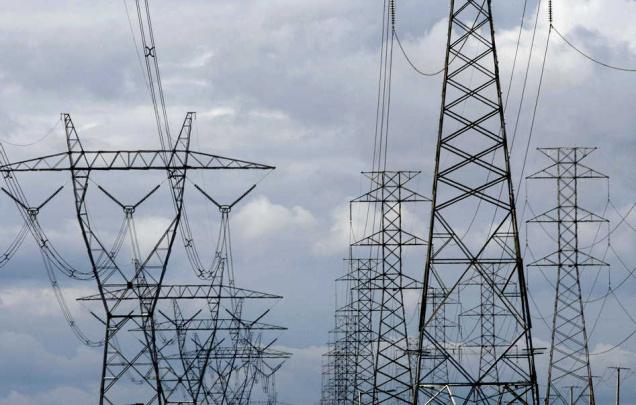Over the past few weeks, we’ve seen how Australia’s energy oligopoly has been able to exercise its dominance over the power markets, and its soft power over the media. In coming weeks and months, we may get to see the extent of their influence over the country’s regulators and policy makers.
At the height of the so-called energy crisis in South Australia last week, the country’s principal policy maker took the opportunity to open up a new battlefront between the powerful incumbent energy industry and the new technologies challenging their business models.

The Australian Energy Markets Commission said it will look further into “system security” in the light of the growing penetration of wind and solar in the main electricity markets.
The review has been at least partly triggered by requests for rule changes by some of the market’s big players, such as AGL Energy, for a new market that some fear could be used to reinforce the dominant position of the incumbents, rather than paving the way for a change to a 21st century grid, using new technologies such as storage and smart software.
Analysts say it is a new and critical battleground on the role of distributed energy and other technologies in the National Electricity Market and the choice between old technologies and a “dumb and dirty” grid, and new technologies for a clean and smart grid.
It represents not just a battle of technologies and business models, between incumbents and disruptors, but also a clash of energy philosophies and ideologies.
These battles are happening not just in the market place, but within policy circles and within regulators themselves. As numerous people have mentioned, including the head of China’s State Grid, transitioning the energy system is not so much a technology issue, as a cultural and political issue.
For this reason, analysts such as Tristan Edis, of Green Energy Markets, welcome the AEMC review, but warn that it could be turned in favour of the incumbents.
Edis says renewable energy has already been unfairly blamed for the recent price spikes in South Australia and elsewhere and fears that the AEMC review “could be used as a subterfuge” to undermine efforts to cut emissions and reinforce the dominance of high carbon emitting generators.
At the core of AGL’s proposal is to create new markets in ancillary services, to deal with issues such as inertia and frequency as more fossil fuel generators are sidelined and renewables take a more dominant position.
At its core the review is a good idea. The current electricity market was designed in and for the last century and to favour fossil fuel technologies. The price is set by the marginal cost of generation, and when demand rises, or changes suddenly, the price goes up, and everyone profits.
The arrival of new technologies with zero marginal costs – principally wind and solar – is turning that model upside down. Already, solar has removed much of the midday peaks which used to be the source of most of the profits for the coal and gas generators, and wind energy is bringing down the average cost.
The question that the AEMC is asking, as coal generators are sidelined and gas generators are also marginalised – mostly due to the incredibly high cost of gas – is what will provide the balance and the ancillary services (frequency control and inertia) critical for energy security of the grid?
AGL’s favourite option is a “capacity” market. But these are seen as yet another fossil fuel subsidy. They have been criticised by the UN and EU, and in Western Australia they have been dismissed as a rort that has seen diesel plants built when they are not needed. Some have never actually been switched on.
An alternative is to encourage new technologies such as battery storage, which can provide the same services, and react a lot quicker than the current fleet of gas and diesel generators.
But the battery storage industry says the market is pitched in favour of the incumbents. It is supporting a rule change that would address what regulators and market operators agree is a major market “distortion”, that is putting up prices, but this rule change is being vigorously opposed by AGL and other coal and gas generators.
“This review is a new battleground on the role of distributed energy in the NEM,” says James Myatt, the CEO of Mojor Power, a new retailer.
“In the same way that the 5 minute settlement rule change is partly about the role of distributed energy in balancing supply and demand in the wholesale market, this review will look at the role of distributed energy in balancing power quality (i.e. frequency, voltage, rate of change in frequency etc.) to keep the power system in a secure operating state.
“The issue is clearly there and it’s very important. With last century’s supply model that generated electricity in huge quantities in far-away places, it was fairly easy to keep the system stable. All those big fossil fuel generators synchronise with the frequency on the power system and hum in tune with the system.
“That’s a market with lots of inertia. Fluctuations in supply and demand in a market with lots of inertia don’t affect power quality too much. But as more distributed and renewable generation enters the market, and as more of the big fossil fuel generators exit, last century’s power system becomes harder to balance. Fluctuations in supply and demand start to have greater impact on power quality.
“So the big question in the review is about how we change market frameworks to protect the security of the power system as the electricity industry undergoes this tectonic shift from the outdated large-scale conventional, synchronous generation to the energy system of the future with smaller, distributed and non-synchronous generation.
“There’s a huge potential for a smarter grid with distributed energy to provide services to keep the system secure. We need to set a clear path to manage the transition from the outdated dirty power system we have to the smart, flexible and cleaner power system of the future.”
Myatt says it is not hard to see why AGL is pushing for a new market, because it would reinforce the position of their assets and create new barriers for renewable energy and other technologies.
“They would get a new revenue stream just to keep their fossil fuel generation online. Managing system security this way would also put an effective cap on the amount of renewables and distributed energy the grid could handle,” Myatt says.
“The problem with this is that it backs the market into a dumb grid that needs a big share of fossil fuel generation as its only method of keeping the system secure.
“Their proposed solution is to hold back the tide. As the economics of renewables stack up increasingly against fossil fuel generation, an inertia market to subsidise fossil fuel generators will just get more and more expensive over time.
“It will be customers paying for it and incumbent fossil fuel generators benefiting from it. And there will be an implicit cap on the amount of renewables this kind of market can handle.”
Myatt and Edis say that there are a number of policy levers that can be pulled to craft a smarter solution that isn’t just subsidising the status quo, but in the current public debate over renewables and the impact in South Australia, it may not be possible to find those.
Myatt agrees that some sort of financial incentive to the big generators to manage their withdrawal may be required, but only as part of a bigger policy package to manage a clear transition from the old dumb grid to the new smart grid.
That will be the big test for the new minister of energy and environment, Josh Frydenberg, the ministerial council of energy, and regulators and policy makes such as the AEMC.










